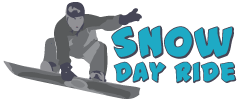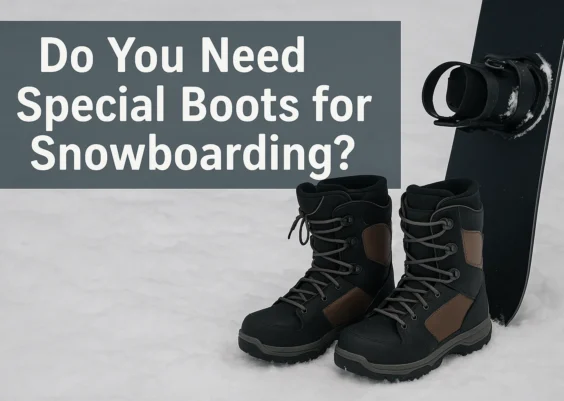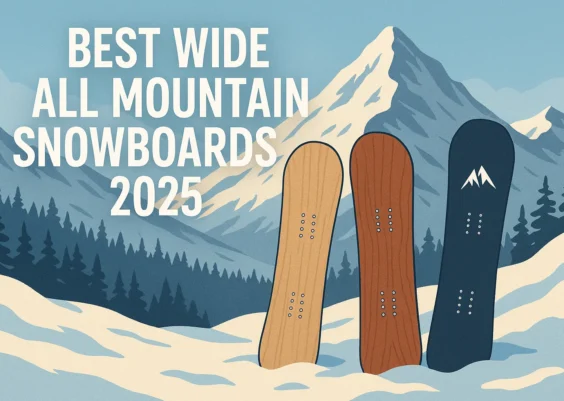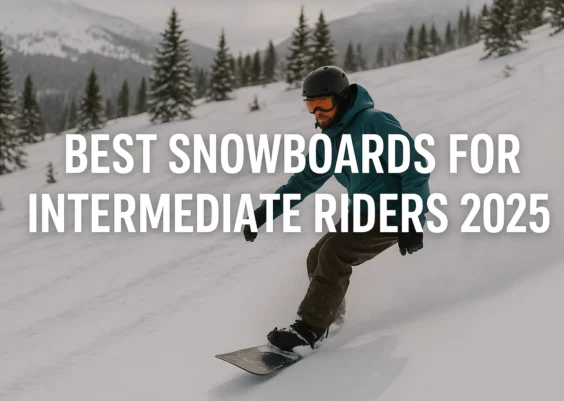Quick Facts
- Snowboard length usually falls between a rider’s chin and nose.
- Rider weight can shift board size by 2–5 cm either way.
- Freestyle boards run shorter, while powder boards are longer.
- Wider boards suit US boot sizes 11+ to avoid toe drag.
- Women and youth often use softer, shorter boards for control.
How tall should your snowboard be? That’s the first question most riders ask when choosing their gear. The right size isn’t only about standing a board next to you and checking if it reaches your chin. Height plays a role, but so do weight, boot size, and riding style.
A shorter board makes turning easier and feels playful, while a longer one offers more stability and speed. Picking the right length gives you better balance and control on the mountain.
In this guide, you’ll see clear numbers, charts, and tips to help you match your snowboard size with your body and style.
How Tall Should Your Snowboard Be?
The most common method is to match snowboard length with rider height. When stood upright, a board should reach somewhere between your chin and nose. This gives a good balance of control and stability. But height alone is not enough. Weight, boot size, and riding style all affect the right choice.
Snowboard Length by Rider Height
| Rider Height (cm) | Suggested Board Length (cm) |
|---|---|
| 150–155 | 140–145 |
| 156–160 | 144–148 |
| 161–165 | 146–150 |
| 166–170 | 148–152 |
| 171–175 | 150–155 |
| 176–180 | 154–159 |
| 181–185 | 158–163 |
| 186–190 | 160–165 |
| 191+ | 163–168 |
Snowboard Length by Rider Weight
| Rider Weight (lb) | Suggested Board Length (cm) |
|---|---|
| 90–110 | 135–140 |
| 111–130 | 138–143 |
| 131–150 | 142–147 |
| 151–170 | 146–152 |
| 171–190 | 150–156 |
| 191–210 | 154–160 |
| 211–230 | 158–163 |
| 231+ | 162–168 |
Boot Size and Board Width
Your boot size affects board width. A board that’s too narrow will cause toe or heel drag.
| US Men’s Boot Size | Recommended Waist Width (mm) |
|---|---|
| 7–8 | 240–245 |
| 8.5–9.5 | 246–250 |
| 10–11 | 251–255 |
| 11.5–12.5 | 256–260 |
| 13+ | 261–265 |
Riding Style Adjustments
- Freestyle (park, tricks): Choose a board 2–4 cm shorter than average.
- All-mountain: Stick to the standard chart length.
- Powder (deep snow): Pick a board 3–6 cm longer for better float.
Women and Youth Snowboard Sizing
Women’s snowboards are designed slightly shorter and softer for easier handling. A good fit usually runs 2–5 cm shorter than the men’s sizing chart for the same height and weight. For example, a woman who is 165 cm tall and 140 lb may feel most comfortable on a 144–148 cm board.
Youth boards follow the same height-to-chin rule, but weight matters more for balance. A child weighing 70–90 lb should use a board around 125–135 cm, while a rider at 100–120 lb will fit better on 135–145 cm. Shorter boards help kids and teens learn turning skills faster and build confidence.
Stance and Binding Tips
Your stance affects balance, turning, and overall comfort. A good starting point for stance width is shoulder-width apart, which gives most riders a natural base. Taller riders may benefit from adding a little extra width, while shorter riders usually feel better keeping it closer.
One simple way to test is to jump straight up and see where your feet land. That position often feels the most natural on a snowboard.
Binding angles also play a key role. Beginners do well with the front foot set around +15 degrees and the back foot at 0 degrees. This setup feels stable and easy to control.
Freestyle riders often prefer what is called a duck stance, with the front binding at +15 degrees and the back at –15 degrees, because it makes switch riding smoother. For all-mountain use, many riders use a mix such as +15 in the front and –6 in the back, which balances carving and comfort.
Binding position can also be adjusted. Centered bindings give beginners and freestyle riders even control on both edges.
Shifting bindings slightly toward the tail, usually by one to two centimeters, helps keep the nose floating in powder. Straps should always feel snug but not overly tight, since too much pressure can cause numbness and foot pain.
FAQs
1. Should a beginner choose a shorter or longer snowboard?
A shorter snowboard is easier for beginners. It turns quickly and feels lighter underfoot, which helps new riders gain confidence. A longer board can feel harder to control at first, so sticking closer to chin height is usually the safest choice for learning.
2. Can rider weight affect snowboard size even if height is correct?
Yes, weight has a strong impact. A heavier rider on a short board will lose stability, while a lighter rider on a long board may struggle to turn. Always check both height and weight charts to choose a board that balances strength and flexibility.
3. What happens if my snowboard is too long?
A board that’s too long feels stiff and harder to maneuver. It can provide stability at high speed but makes turning and tricks more difficult. Beginners especially may find it tiring to ride. Correct sizing keeps the board playful without sacrificing control.
4. How do I know if my board is too wide or too narrow?
If your toes or heels stick out past the edge, the board is too narrow, and you risk dragging during turns. If it’s too wide, turning feels sluggish. The waist width chart matched with boot size helps avoid these problems.
5. Are women’s snowboards really different from men’s?
Yes, most women’s boards are slightly lighter, softer, and shorter to match lower average weight and height. They also have narrower waist widths for smaller boot sizes. While women can ride men’s boards, using a women’s-specific board often makes riding smoother and more comfortable.
6. Do kids grow out of snowboards quickly?
Yes, children can outgrow a board in one or two seasons. Choosing the exact right size is better than buying too large. A slightly longer board may give one extra season of use, but it often slows learning since control becomes harder.
Final Thought
Choosing the right snowboard size is a step toward enjoying every ride. Once you know how tall should your snowboard be, the rest is about practice and personal style. A board that feels natural under your feet makes progress smoother and days on the mountain more fun.




